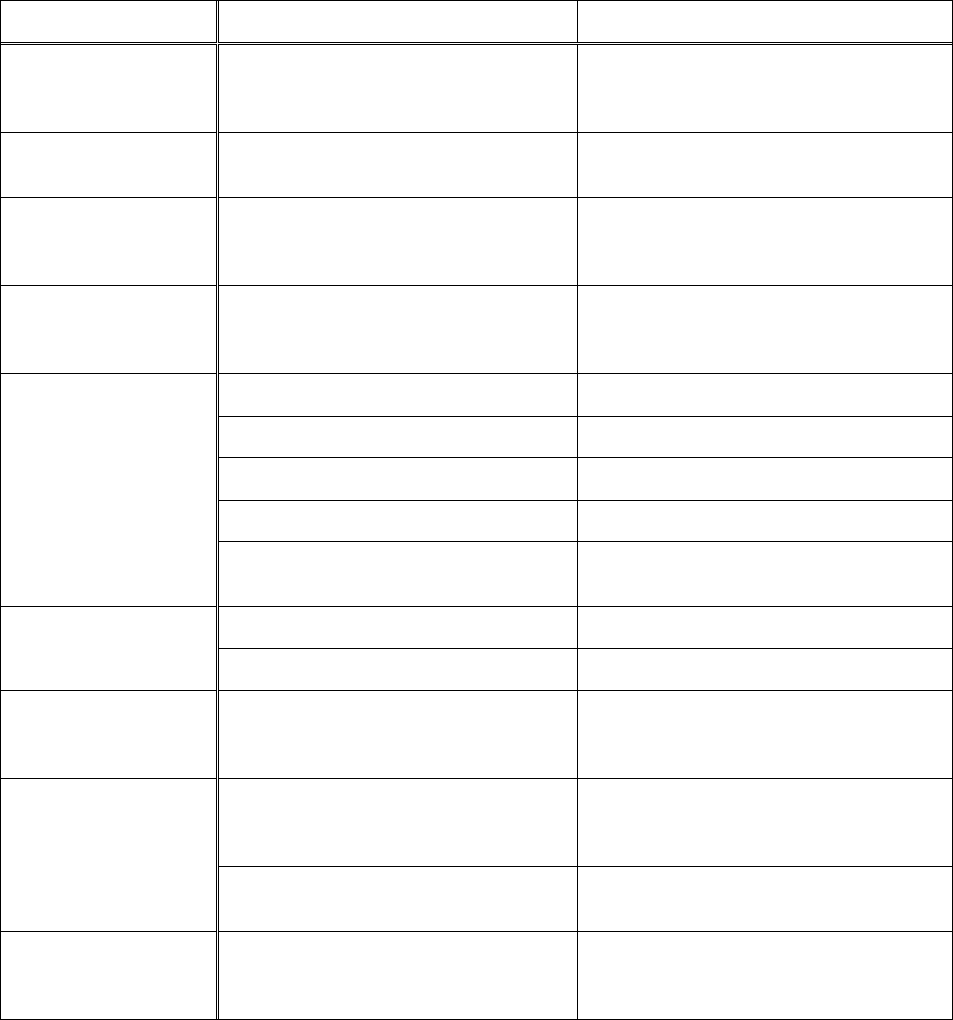
30
Troubleshooting – Operating Problems
Trouble Probable Cause Remedy
Finished stock is
concave on back
end.
Knife is higher than outfeed table.
Raise outfeed table until it aligns with
tip of knife. See page 19.
Finished stock is
concave on front end.
Outfeed table is higher than knife.
Lower outfeed table until it aligns with
tip of knife. See page 19.
Finished stock is
concave in the
middle.
Both tables have too much end fall.
Raise both table ends using the cam
adjustment devices. See pages 17-18.
Ends of finished
stock are cut more
than the middle.
Table ends are raised higher than the
middle.
Lower both table ends using the cam
adjustment devices. See pages 17-18.
Cutting against the grain. Cut with the grain whenever possible.
Dull knives/inserts. Sharpen or replace knives/inserts.
Feeding workpiece too fast. Use slower rate of feed.
Cutting too deeply. Make shallower cuts.
Chip out.
Knots, imperfections in wood.
Inspect wood closely for imperfections;
use different stock if necessary.
Wood has high moisture content. Allow wood to dry or use different stock.
Fuzzy grain.
Dull knives. Sharpen or replace knives/inserts.
Cutterhead slows
while operating.
Feeding workpiece too quickly, or
applying too much pressure to
workpiece.
Feed more slowly, or apply less
pressure to workpiece.
Knives incorrectly set.
Set knives properly using provided knife
setting gauge. Check that knife slots
are clean and free of dust or debris.
“Chatter” marks on
workpiece.
Feeding workpiece too fast.
Feed workpiece slowly and
consistently.
Uneven knife marks
on workpiece.
Knives are nicked, or out of
alignment.
Replace nicked knives; align knives
properly using knife-setting gauge. See
page 20.
